In recent years, fly fishers have become increasingly interested in targeting atypical sportfish. It wasn’t that long ago that species like carp, gar, and bowfin were considered trash fish. To today’s new generation of anglers, they are considered worthy or even prized gamefish. My 13-year-old son is part of this generation, and while he enjoys trout fishing, he craves catching large fish that are willing to eat his lure or fly. To him and a growing number of anglers, there’s no stance to take between stripes and spots. He loves to catch them all, and this sentiment has been rubbing off on me.
For the past 20 years, I’ve looked forward to traveling west during my annual trout pilgrimage. Each year, I’ve embarked on a 3-4 week road trip, traversing the American west, fishing some of the best trout streams in the country, and making a stop to visit my brother in West Yellowstone. This summer, I decided to switch gears and turn my focus to non-trout species. I love both trout and the American West, but I was looking for something different. Along with my family, I’ve been learning more about our local smallmouth and largemouth fisheries, fishing new waters right in my backyard while learning new tactics, presentations, and fly patterns. In addition to my new love affair for bass, my son and I were also seeking a unique fly fishing experience, but one we could explore within a day’s drive of home. Eventually, this led us north, in search of bowfin.
Guidance
When learning a new skill or targeting a new species, I’ll hire the most qualified instructor or guide I can find. A good guide is like a good accountant during tax season. It’s money well spent. You can learn much from books, articles, blogs, and YouTube, but having one-on-one interactions with a knowledgeable guide in the field is invaluable. This is why, when looking for help learning how to fly fish for bowfin, I hired Drew Price of Masterclass Angling to guide us for bowfin on his home waters—Lake Champlain in Vermont. Drew has been targeting bowfin with a fly for over two decades and is the leading expert in the field. He’s also an excellent guide and teacher, which is equally important.
Bowfin are neither difficult nor easy to catch but learning the tactics, rigs, and pattern selection from Drew has given me confidence to explore bowfin opportunities closer to home. Hopefully, they’ll also help pique your interest in chasing this 150-million-year-old species.

Basic Setup
A fast action 8 weight streamer rod is helpful given the nature of the hookset. Drew currently uses a 8’ 5” 8 weight Orvis H4, as a shorter rod offers greater leverage during the hookset and playing of the fish. A short leader (maybe 4’) with approximately 20 lb tippet is attached to a floating line, but note that the fly line has nothing to do with the presentation. Basically, 6-8” of fly line along with the short leader is outside the rod tip, so the fly is hanging vertically under the tip. The idea behind this short leader and rod fully extended is you want the rod to be level to water’s surface during the gentle lowering/jigging presentation. Keeping the rod positioned horizontal to the water’s surface allows for greater force during the hook set, using the butt section of the rod blank to set the hook. If too much line and leader is used, the rod tip must be positioned up at angle for line control and only allows the softer tip to be used when setting the hook (aka trout set). Bowfin are not easy to hook. The more force you can create during the hookset the better, so keep a short length of line and leader outside the guides and maintain a level rod tip angle during the presentation.
Presentation
There’s no traditional fly casting with Drew’s approach to bowfin. First, you wait to present the fly until you have a visual of a fish, then you need to look to see what direction the bowfin is facing. This is close combat fishing. The fish are attracted to the movement created by the boat, paddle, or push pole. Drew says this is due to their natural curiosity, not stupidity. They’re simply attracted to commotion and will investigate. This means you’re fishing directly overtop the fish.
Once you see the head position, the presentation is accomplished simply by lowering the fly into the water directly in front of the fish’s mouth, allowing the fly to hit bottom and jigging the fly up and down to encourage a strike. When I say lowering the fly into the water, that’s exactly what I mean. If you drop the fly creating a “plop” sound then you’re likely going to spook the fish. The idea is to first place or drag the fly on the water before allowing the fly to gently fall towards the bottom without causing too much commotion near the surface.
My first several presentations were overly conservative — I’d place the fly roughly 6-8 feet away from the fish — and fail to produce results. Sometimes, a presentation like this works (especially when fishing larger patterns) but when Drew said to put the fly on the bowfin’s nose, he meant exactly that. Several times I laid the fly literally on the fish’s nose and let it slide it off to allow the fly to drop in the water column—and this is when many of my strikes occurred.
Once the fly drops to the bottom, a smooth lift of the rod tip jigs the fly vertically in front of the fish’s view, then allowing it to drop again. A mistake I made during my first several hours of fishing was trying to hold the pattern in the bowfin’s view while jigging. This is a big “no-no,” as I found out by spooking several good sized fish. Drew had to explain to me several times that nothing in nature moves like that so you must allow the fly to fall and avoid the temptation to keep it in front of the fish during the jigging presentation. While this approach can work well for trout, bass, and other species, it killed my chances when chasing bowfin — and served as further reminder why I’d hired a guide who knew the ins and outs of our target species.

This presentation may sound like a piece of cake but it’s not. Bowfin are often found in thick aquatic vegetation where you may only have an opening a few inches wide through which to lower the fly into the water. It’s like lining up a bowling ball to strike a pin. Interestingly, when a bowfin shows interest in your fly it’s dorsal fin will start waving like an airport windsock dangling in the wind. Sometimes the takes are soft, the fish casually inhaling your fly, while other times it’s a violent strike, almost pulling the rod out of your hand. Once hooked, a short but chaotic chain of events ensues as you try to hoist a living, thrashing dinosaur through the water and thick vegetation (another reason why short but powerful rods offer an advantage).
Fly Patterns
Bowfin eat other fish, aquatic insects, and crayfish. During our two days, Drew used small- to medium-sized crayfish patterns with heavy tungsten or dumbbell eyes along with additional wraps of .035 wire, making it feel like a bowling ball hanging off your rod. One key feature of these patterns was the wide hook gap and stout wire used—you’re likely going to bend a hook if you don’t use an extra heavy gauge wire hook when playing bowfin.


Wrapping Up
There are anglers who won’t like chasing bowfin — stalking the prehistoric fish through murky backwaters, the unusual and cast-free presentation, and the short but chaotic fights. If they try it, they’ll be unlikely to do it again. I’ve taken my son all over the country fishing for trout on a fly but his experience with Drew fishing for bowfin was hands down his favorite to date. He and I can’t wait to travel back to Lake Champlain to fish with Drew for another round. Fishing for bowfin is completely different from what we so often do for bass and trout, which is a big part of why we enjoyed it as much as we did.
It’s also worth noting that if you have young children/grandkids or know someone with a physical disability who may have trouble casting flies, I can’t think of a better way to introduce them to catching big fish.
If you’re looking for a truly unique fishing experience, I would highly recommend trying to find the closest bowfin fishery or better yet, figure out a way to fish with the bowfin whisperer himself, Drew Price. It was the best money I’ve spent all summer.




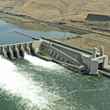
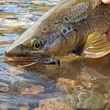

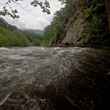



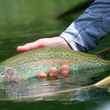
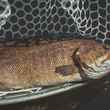



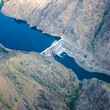




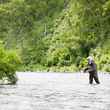
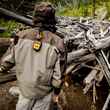



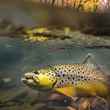

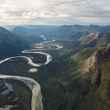
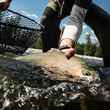
Comments